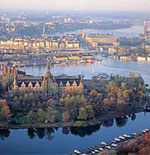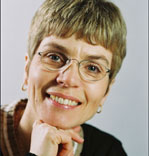
Aerial view of Stockholm

FRONT PAGE
About us

The 2010 results
The 2010 project
The 2010 finalists
Code of Ethics
The World Mayor Prize

The 2008 results
The 2008 project
The 2008 finalists
The World Mayor Award

The 2006 results
Methodology
The 2006 finalists
The World Mayor Award

The 2005 results
Contest methodology
List of finalists
The World Mayor Award

Mayor of Athens
Mayor of Guatemala City
Mayor of Mississauga
Mayor of San Fernando
Mayor of San Francisco

Mayor of Athens
Mayor of Guatemala City
Mayor of Mississauga
Mayor of San Fernando
Mayor of Vienna

Comments on finalists from The Americas
Comments on finalists from Europe
Comments on finalists from Asia, Australia and Africa
Comments on Addis Ababa
Comments on Antananariva
Comments on Athens
Comments on Atlanta
Comments on Belo Horizonte
Comments on Bonn
Comments on Guatemala City
Comments on Karachi
Comments on London
Comments on Melbourne
Comments on Mississauga
Comments on Rio de Janeiro
Comments on Rome
Comments on San Fernando
Comments on San Francisco
Comments on Toronto
Comments on Vancouver
Comments on Vienna

Mayor of Addis Ababa
Mayor of Antananarivo
Mayor of Athens
Mayor of Belo Horizonte
Mayor of Bonn
Mayor of Ekaterinburg
Mayor of Guatemala City
Mayor of Innsbruck
Mayor of Karachi
Mayor of Kiev
Mayor of Melbourne
Mayor of Mississauga
Mayor of Munich
Mayor of Rhodes
Mayor of Rome
Mayor of Tshwane
Mayor of Vienna

The 2004 contest
List of all 2004 finalists
Edi Rama wins 2004 award
People ask - Edi Rama replies
Why we voted for the Mayor of Tirana
Why we voted for the Mayor of Mexico City
History of Tirana

Front Page
Site Search
About City Mayors
The City of Stockholm
A skyscraper for students, environmental charges for vehicle traffic, a national stadium for 50,000 spectators and investments amounting to 20 SEK billion – a year with Stockholm’s first female Mayor, Annika Billström.
She has worked throughout 2004 to bring together the city, the business community and the neighbouring towns of central Sweden on a common agenda that make Stockholm the most exciting region in northern Europe. This agenda involves a series of measures under the headings Green City, Knowledge City, Events City, Design City and IT City, and also includes forward-looking investment amounting to SEK 20 billion, primarily in housing and infrastructure.
Stockholm is today a world leader in the work of protecting the environment and achieving sustainable development. To enhance this role and ensure that Stockholm will continue to be an attractive city for its inhabitants and visitors, Annika Billström and the majority group in Stockholm have this year allocated SEK 1 billion to the cleaning of waterways, lakes, and land for housing, the improvement of waste disposal systems, and the protection of valuable green areas and water in and around the city.
She has also decided to introduce environmental charges for vehicle traffic, to reduce congestion and improve the inner-city environment. This will take place on a trial basis from the summer of 2005 to the summer of 2006, after which the people of Stockholm will be asked, in a referendum, to decide whether it should continue. This trial period is expected to generate income of around SEK 1 billion to be invested in public transport, used today by 80 per cent of Stockholmers. To achieve changes in transport and fuel use, public transport and ”green” cars will be free of charge. The number of petrol stations offering green fuels is also being doubled, and the City of Stockholm is ”greening” 60 per cent of its vehicle park.
Under the heading ”Knowledge City”, Stockholm is focusing on developing the fields of biotechnology and biomedicine in which it is already a European leader. Annika Billström, working with the University and the business community, is heading up the work of creating a new urban development area, with around a thousand new jobs and houses, in the northern part of the city, home to the Karolinska Institute – renowned for its research – and the University Hospital. 2004 also saw the decision to locate the EU’s new European Centre for Infectious Disease Control in Stockholm.
Annika Billström has also secured the city’s pruchase of Stockholm’s best-known skyscraper, the ”Tax Scraper”, formerly home to the National Tax Board. The building is now being converted into 600 student homes, right in the middle of Stockholm, as part of Stockholm’s work to attract more students. From autumn 2004, students will also be offered a student package consisting of an Internet information site and discounts and free benefits in entertainment, sport, culture and other events. These are some of the measures that have led to Stockholm recently being ranked as Europe’s foremost knowledge city.
This year, Stockholm has achieved a position as one of the world’s most popular locations for congresses and other events, a result of focus on the work of attracting large, important fairs and congresses to Stockholm. Annika Billström has also this year presented a proposal for a National Stadium for sporting and other events that can hold 50,000 spectators. The stadium could be ready by 2006 provided it achieves the backing of the Swedish Football Federation.
Stockholm is also an international leader in IT and telecom, a position that has been consolidated despite the international recession. Kista Science City, the city’s IT and telecom development park, attracted 70 new companies in 2003 and a further 30 in 2004. There are now more companies in the area than there were during the boom. In its Mobile City work, the city is working very actively to create more mobile services for Stockholmers. Additionally, one of the city’s municipal housing companies decided in 2004 to provide broadband in its entire property stock, which means that the City will be giving 90,000 Stockholmers – already the most connected population on the globe – access to broadband.
2005 is the Swedish Design Year. Stockholm has responded to this by producing a package of measures to develop this business area, through creating a cluster of companies, colleges, education courses and other actors in design and creation, and also by opening a design centre in Stockholm in 2005. In 2004, it also became clear that Stockholm will host the country’s only international design fair, FutureDesignDays.
Biography of Annika Billström

Annika Billström, Mayor of Stockholm and 2004 World Mayor finalist for Europe
Introducing
World Mayor 2006
The World Mayor project is now in its third year. As in 2004 and 2005, this year’s World Mayor will again be seeking out mayors who have the vision, passion and skills to make their cities amazing places to live in, work in and visit. The World Mayor project aims to show what outstanding mayors can achieve and raise their profiles. It honours those who have served their communities well and who have made contributions to the well-being of cities nationally and internationally. The most outstanding mayor of 2006 will be presented with the World Mayor award.
In 2004, Edi Rama, Mayor of Tirana, won the Award. The 2005 winner was Dora Bakoyannis, Mayor of Athens and now Greek Foreign Minister.
Between January and May each year, citizens from across the world are invited to nominate mayors for the World Mayor Award. They are also asked to provide reasons for their choice. After the close of the nomination stage, City Mayors, the organisers of the contest, prepare a shortlist of mayors who go forward to the second round of the World Mayor contest. In 2006, the list of finalists includes 50 mayors from North and South America, Europe, Asia, Australasia as well as Africa.
